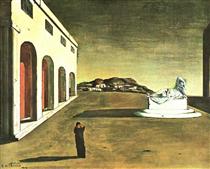Bence Nanay at nonsite.
 Still, the application of the idea of the history of vision does not stop, and does not begin, with modernity. As Jonathan Crary argues at length, the general mode of perception may have undergone some important form of change already in the first half of the 19thcentury. And theorists of postmodernism rely on the principle of the history of vision as much as theorists of modernity do. Frederic Jameson, for example, argues that postmodernism offers “a whole new Utopian realm of the senses.” The premise all these arguments share is that history, and art history, can be understood, at least partially, as the history of perception. This assumption is so deeply ingrained in much of the discourse on 19th and 20th century art and culture and in (at least some branches of) art history and aesthetics that it has been taken for granted without further discussion. As Whitney Davis summarized, “according to visual-culture studies, it is true prima facie that vision has a cultural history.” And one of the guiding ideas of post-formalism has become the claim that vision (and imagination) has an (art) history.
Still, the application of the idea of the history of vision does not stop, and does not begin, with modernity. As Jonathan Crary argues at length, the general mode of perception may have undergone some important form of change already in the first half of the 19thcentury. And theorists of postmodernism rely on the principle of the history of vision as much as theorists of modernity do. Frederic Jameson, for example, argues that postmodernism offers “a whole new Utopian realm of the senses.” The premise all these arguments share is that history, and art history, can be understood, at least partially, as the history of perception. This assumption is so deeply ingrained in much of the discourse on 19th and 20th century art and culture and in (at least some branches of) art history and aesthetics that it has been taken for granted without further discussion. As Whitney Davis summarized, “according to visual-culture studies, it is true prima facie that vision has a cultural history.” And one of the guiding ideas of post-formalism has become the claim that vision (and imagination) has an (art) history.
more here.
